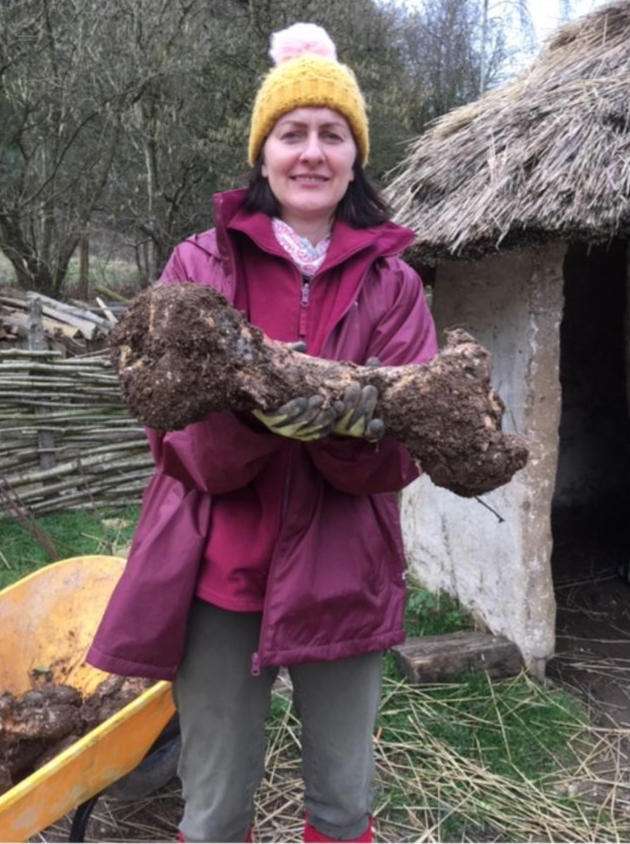Week 6 of our Neolithic House project and we are busy working on thatching and erecting the end walls of the structure. Here, our Archaeologist Claire Walton looks at some of the tools we’ve been using along the way…
The Stone Age…. or should that be the Bone Age?
One thing’s pretty clear: we revere what’s left, not what’s absent. Neolithic tools are a good example of this. The popular and skilled art of flint knapping is all about the cutting head of the tool. Where are the ‘handle hewers’, sitting in circles taking notes and carefully honing their skills? It seems the wooden handle gets left in the (woodwormy) dust. Obviously the durability of flint over wood in the archaeological record creates this paradigm. In the absence of material traces, experiments can be very helpful. You might think that because the axe head is relatively useless without being hafted onto a handle that there would be experimental archaeologists the world over studying what wooden handles might have been like, but stone trumps wood every time in the fascination stakes, it would seem!
The same goes for bone tools. Because bone is an organic material, evidence of tools is far less frequent. However, it was readily available to any community, does not need to be obtained by trading, is durable and multi-shaped offering many options. The range of tools and objects created by the archaeological technician Wulf Hein, (see below) demonstrate the range, from awls and chisels, to needles, pins and even a flute. I echo the sentiment of other archaeologists when I say it should be re-named the Bone Age, not the Stone Age.
Image (C) Anke Udelhofen
Our original tests used bones already on site, which were probably a bit brittle and aged for our purposes. They were good enough to prove that the concept works. Now however, the plan is to take the practical experience we have gained, combine it with pre-existing academic research and formulate a more refined research question. In other words, take something experiential, and develop it into an experiment. (if you read last week’s post, you’ll know what I’m talking about!)
Clearly, to replicate the actions of bone tools from the past, we need our bones to have come from animals whose diet and lifecycle mimics that of the Neolithic. Our new bones have been kindly donated by Knepp Castle Estate in West Sussex, famous for their rewilding project.
Because I’m an archaeologist and I like digging bones out of the ground, I buried them when they first arrived - this normally does a fast job of removing the last bits of fat and goo, but it’s been too cold, and on excavation last week, they proved to be still rather ‘fresh’ ( ie they really stank!) We’ve explored a few ways of speeding up the defleshing process… including jet washing!
Here’s a mammoth I dug up earlier…..
I know, it looks like it’s come from a hairy Siberian elephant but it’s actually a cow femur.
Hopefully with some good planning and help from our partner UCL, we can begin to think about a really meaty (sorry!) project to get out teeth into (sorry!).



